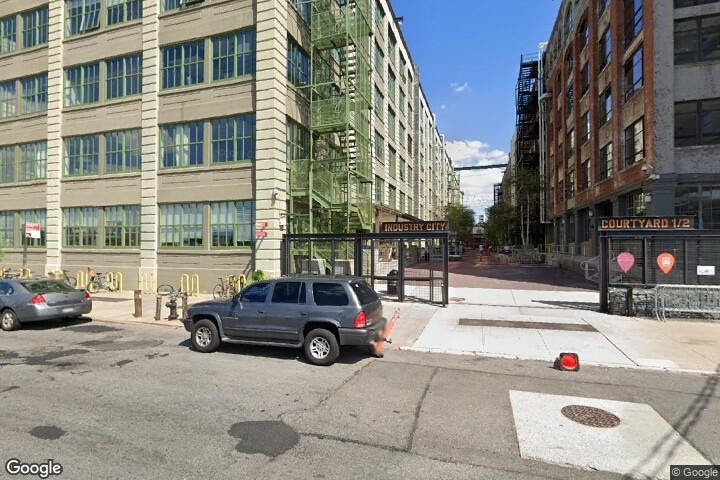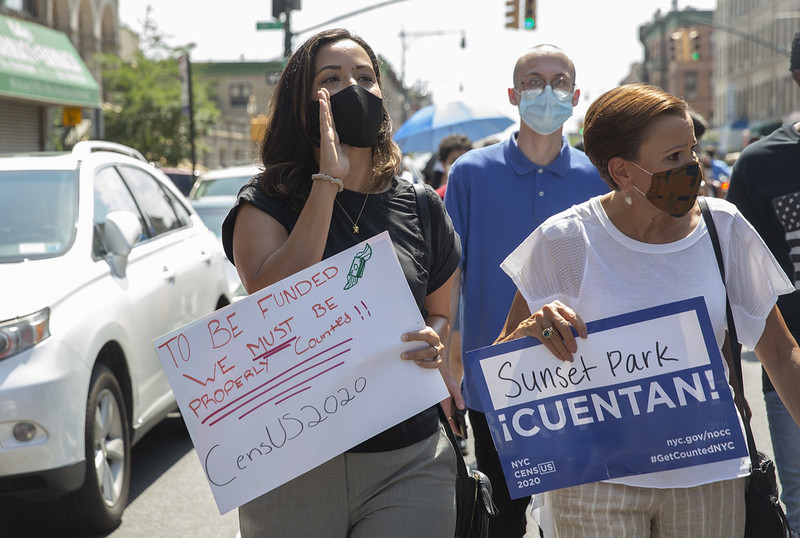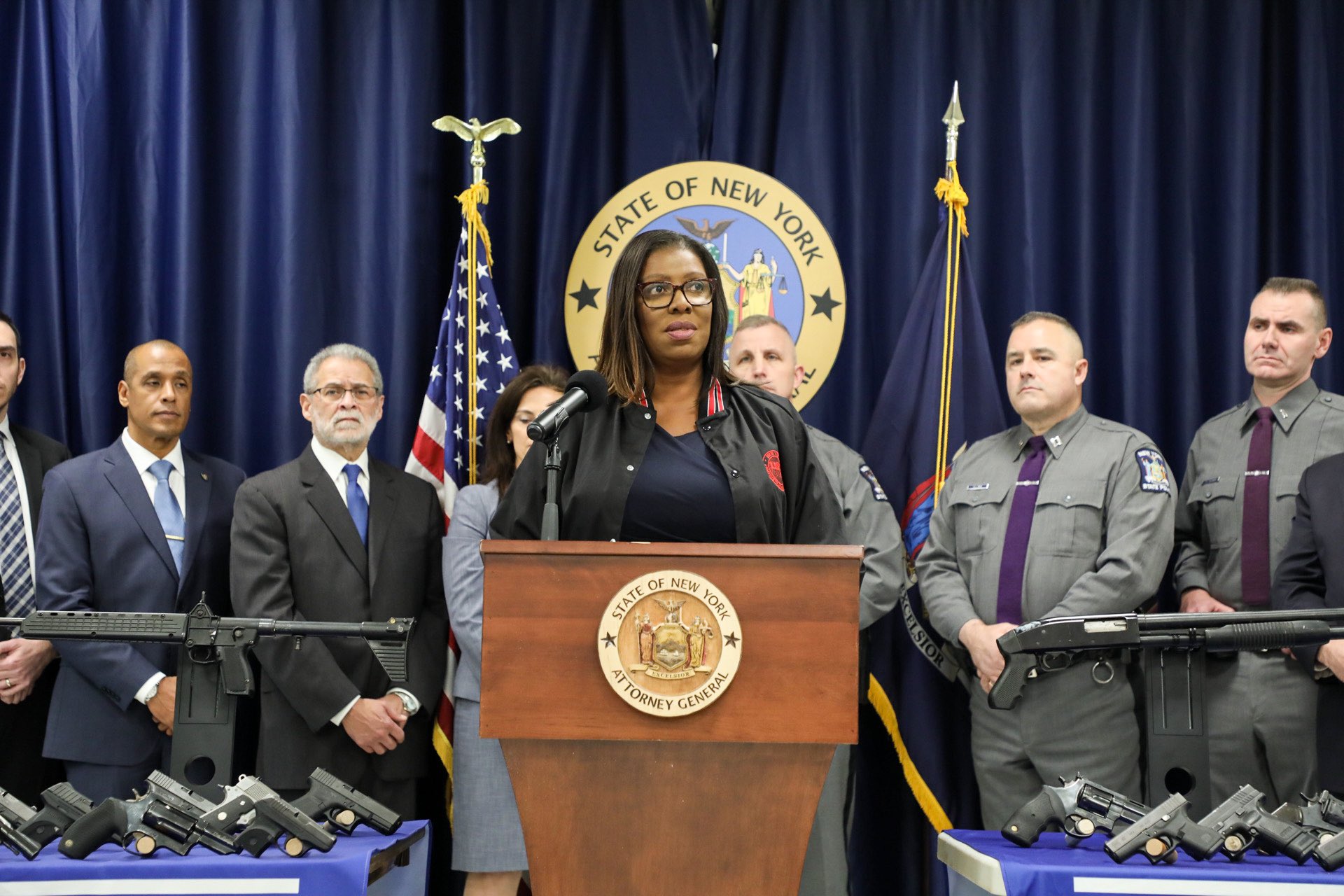Busting Industry City Rezoning Myths

Industry City (photo: @IndustryCity)
City Council Member Carlos Menchaca’s July announcement of his intent to vote no on Industry City’s controversial “special innovation zoning district” because Jamestown Properties and investor owners were “ramming through their proposal unchanged,” catalyzed a deluge of appeals to the City Council and Speaker Corey Johnson to break the long-standing tradition of ‘member deference’ on matters pertaining to land use and real estate development.
The New York Daily News followed with three editorials urging Industry City to “build bigger” and “The Council must vote yes” because the stakes for the city are to “build or die.” Members of the City Council - Robert Cornegy (Brooklyn District 36), Ritchie Torres (Bronx District 15), and Donovan Richards (Queens District 31) - penned opinion pieces stating that as a “steward of the public good,” they plan to “do what I believe is right” and vote to approve Industry City’s massive special district and rezoning application. With no direct neighborhood ties or experience, their support is “personally offensive” to Alexa Avilés, Community Board 7 member and candidate in City Council District 38 to replace the term-limited Menchaca.
Amid the ongoing economic toll of the COVID-19 pandemic, the rezoning of Industry City has taken on heightened urgency as an engine of job creation in a city facing “a severe blow” to its local economy and “distressingly high” unemployment rates, particularly among immigrants and communities of color. A Chinese language news article reposted in City Limits reported on a letter to City Council Speaker Johnson from Sunset Park’s Chinese immigrant growth coalition, comprised of Community Board 7 members, business and property owners, and local developers expressing their support for an Industry City expansion. Community Board 7 member Kenny Guan, owner of Guan Realty Corp. located in neighboring Dyker Heights, said, “We need to build up locally and in the city and the entire country with jobs especially with the Coronavirus here in Sunset Park.” Mr. Guan also makes an appearance in an Industry City video touting opportunities for local small businesses.
“There are zero public dollars at stake here”
Supporters of Industry City repeat and perpetuate the false notion that as a “purely private investment,” Industry City, therefore, does not benefit from public subsidy. In a 2015 Crain’s article, Industry City CEO Andrew Kimball noted city and state investments of $115 million for infrastructure upgrades to the sprawling 16 building complex. The city also invested in ferry service and a fiber optic broadband network along Third Avenue to provide high-speed connectivity, and as former Deputy Mayor Alicia Glen noted, “If we were not doing all this other stuff, [Industry City] wouldn’t be as successful as they’re going to be.”
Furthermore, a Partnership for New York City letter signed by 17 organizations including labor unions, local chambers of commerce, and the Real Estate Board of New York, claimed rezoning Industry City “will generate $100 million a year in desperately needed local tax revenue.” Real property taxes are the largest source of city revenues to fund essential public services such as education, housing, transit, and health services. The truth, however, is Industry City has long been a beneficiary of the city’s costliest commercial real estate tax exemption program, the Industrial and Commercial Incentive Program (ICIP), which significantly lowered the amount of tax owed on a commercial property by reducing the property’s assessed value for up to 25 years.
Due to its high cost in foregone commercial property tax revenues, which the Independent Budget Office estimated at $500 million in fiscal year 2008, ICIP was replaced by the Industrial and Commercial Abatement Program in 2008. But, properties with previously approved ICIP tax exemption benefits (such as Industry City) were not affected.
Despite the perception that Industry City does not benefit from public subsidies, three Industry City buildings have been paying significantly reduced property taxes for nearly two decades. In the case of 639 2nd Avenue, which is one of Industry City’s nine city block-long “finger buildings” connected by a public corridor of boutique retailers dubbed Innovation Alley, its current estimated market value is $36,331,000 but the 2020/2021 taxes will be based on an assessed value of a mere $9,446,240. The 25-year ICIP benefit period for 639 2nd Avenue will end on June 30, 2027. For 882 3rd Avenue, a 12-story building with commercial office tenants, Industry City’s 2020/2021 tax bill will be based on an assessed value of $21,827,520, which is significantly less than half the property’s market value at approximately $60 million. Industry City’s commercial property tax exemptions are, in fact, a public subsidy.

“To Bring 20K New Jobs to Sunset Park”
City Council Member Ritchie Torres’ statement in his co-authored New York Daily News opinion piece, “..Industry City’s application is not about skyscrapers that displace people. It is about jobs that employ New Yorkers in a time of depression-level unemployment,” is particularly myopic and disappointing. As Chair of the Oversight and Investigations Committee, Council Member Torres led a March 2019 joint oversight hearing with Council Member Paul Vallone, Chair of the Economic Development Committee, to demand an account of Mayor de Blasio’s New York Works jobs plan. Describing the mayor’s plan to create 100,000 “good-paying” jobs by 2027 as “glorified wishful thinking,” Council Member Torres was a fierce advocate for accountability of the mayor’s “pretty promises.”
Community concerns about Industry City have long centered on the questionable promise of entry-level, good-paying jobs for working class New Yorkers. Despite the fanfare about an Innovation Lab to connect Sunset Park residents to employment at Industry City, the only account of workforce training and placement outcomes showed paltry gains for individuals seeking employment. In a one-year period between May 2018 and May 2019, the Innovation Lab helped place 114 individuals of whom 91 secured employment in Industry City “innovation economy jobs” such as maintenance/building services, security guards, dispatchers, food production, and retail.
One of Council Member Torres’ chief criticisms of New York Works focused on the “uncertain at best and woefully inaccurate” method of tracking job creation. It was during the March 2019 joint oversight meeting that Council Member Torres’ questioning of job projections versus actual numbers of jobs created led to the discovery that in the one year since the New York Works implementation, $300 million was spent to create a mere 300 actual jobs at that point. It is, therefore, especially disappointing that Council Member Torres endorsed Industry City’s rezoning application without studying Industry City’s track record in job creation for working class New Yorkers. Regulating land use and zoning are key tools the city leverages for economic development and job creation, and as tools that should advance public interest and welfare rather than private investor profits, job creation claims based on a rezoning deserve the highest level of scrutiny and accountability.
Acknowledging the lack of Industry City job creation data, Council Member Menchaca appealed to his colleagues in a September 9 letter, writing, “Industry City’s argument boils down to a promise. That they will create thousands of jobs during an economic recession. This argument is also their greatest liability.”
“The Ultimate Cash Cow”
A few months after Jamestown Properties and their investor partners acquired an ownership share of Industry City and hired Andrew Kimball, who transformed the Brooklyn Navy Yard into "an economic engine of craft whiskey distilleries and film studios," working artists were displaced in favor of hosting art and design festivals such as the NYCxDesign. At the May 2014 NYCxDesign, Chilean artist Sebastian Errazuriz created a cash cow piñata stuffed with $1,000 bills. Festival attendees took turns swinging a stick at the piñata in an effort to break it and grab for the dollar bills. Errazuriz stated his cash cow symbolizes “...a golden calf from the Bible, a false idol, the Bull of Wall Street" and years later, the cash cow piñata remains an apt metaphor for the “false idol” of job creation based on a massive private investor and developer-led rezoning.
The COVID-19 pandemic underscored deep and persistent racial inequality but approval of Industry City’s rezoning proposal to establish an innovation district will not generate the jobs desperately needed by working class New Yorkers.
***
Tarry Hum's family moved to Sunset Park in 1974, and her father continues to reside there. She is Chair of the Urban Studies Department at Queens College, CUNY and author of Making a Global Immigrant Neighborhood. On Twitter @TarryHum.
***
Have an op-ed idea or submission for Gotham Gazette? Email This email address is being protected from spambots. You need JavaScript enabled to view it.
Participation in the Census is The Most Powerful Thing The Latino Community Can Do Right Now

Latino lawmakers & others getting out the 2020 Census count (photo: John McCarten/City Council)
In this unsettling and disturbing time of high uncertainty and racially-motivated hate, one of the most important -- and easiest -- ways Americans can ensure their own protection is by completing the census. When brown Americans fill out the census, it is an act of protest. Even in 2020, many still believe filling out the census is as though we are taking what isn’t ours, and that is exactly the point. As residents of this country, we have a right to take advantage of the federal resources that our taxes pay for, but we won’t get them unless we are counted.
When President Trump says he is concerned with undocumented people filling out the census, he isn’t talking about Canadians sneaking into our country, he is talking about those of us who have every right to complete this 10-question, 10-minute form. His language aims to intimidate my fellow Latino neighbors from our constitutional right to being counted. Participation in the census is the most powerful thing we can do to ignore the fear-mongering, xenophobia, and hate.
In the 2010 census, just 50.5 million people responded as Hispanic, hugely misrepresenting the United States’ population of 59.9 million Latino citizens. The George Washington Institute for Public Policy found that an incomplete census form denies an individual $4,000 in social services. Latino Americans have missed out on $37.6 billion in federal funding over the past 10 years due to incomplete and inaccurate census data.
While white people are overcounted in the census by 1%, Latinos are historically undercounted, due to a number of barriers including language, education, and immigrant status. These barriers aren’t worth remediating to a government that was created for, by, and of white people. Overcoming these intentionally exclusionary systems protects Latino people’s constitutional rights. While failure to fill out the census threatens Latino voices in Congress, limits access to Medicaid and food stamps, and prevents Latinos from reaping the benefits of investment in infrastructure, schools, public works projects, and more.
St. Francis College is one of the most diverse private colleges in the nation. Of our 2,292 undergraduates, 28% self-identified as Hispanic. We are committed to serving all of our students with the highest standard of care and respect, regardless of what harmful and hateful rhetoric and systemic oppression marginalizes our non-white students. We instill in our students the importance of being vocal and active in their communities, inside the classroom and beyond, and involvement in the census is a key component.
We are committed to teaching civic duty as well as academics. As part of this work St. Francis College has been encouraging students and community members to take advantage of their right to be counted this year, setting up events that include census and voter registration tables to drive up numbers and encourage students to take what they are rightfully owed, and to demand our country’s representation truly represents us.
President Trump announced in July that the census will be ending earlier than previously planned, a move that serves no purpose other than to limit brown people from being counted and accessing our rights. We, students and faculty of St. Francis College and beyond, must protest and reject this exclusionary and hateful move by taking the 10 minutes required to be counted in the census. Do it today at my2020census.gov.
Every person in the United States -- not just every citizen, every resident -- has the right to be counted and considered. This is our country, too. Let’s ensure we are part of the count.
***
Miguel Marinez-Saenz is President of St. Francis College. On Twitter @SFCNY.
***
Have an op-ed idea or submission for Gotham Gazette? Email This email address is being protected from spambots. You need JavaScript enabled to view it.
We’re Still Waiting for Answers from the New York Attorney General Six Months After Police Killed My Brother

NY Attorney General Letitia James (photo: @NewYorkStateAG)
It’s been over six months since my younger brother Matthew Felix was unjustly and needlessly murdered by the Nassau County police. Over 190 days of those officers not being held accountable for robbing him of his life the week before his 20th birthday. On February 25, 2020, the Nassau police department believed my brother to be the alleged perpetrator of a carjacking and proceeded to stake out our Queens home. But he was never to be arrested or have his day in court.
After Matthew exited our home and entered his personal vehicle, undercover officers followed him for a few blocks. It’s not clear what happened next, but the end result? A hail of bullets that killed my brother and caused him to crash his car.
To this day, we do not know why the Nassau police chose to undergo an undercover operation or what led them to brutally kill my brother. We do not even know who the officers were, who decided to take my brother’s life, nor how many bullets ripped through his car to cause his death. Due to Governor Cuomo’s Executive Order 147, the investigation into my brother’s death was immediately placed in the hands of the New York State Attorney General’s office.
Though I want to assume that the executive order was well intentioned, meant to provide justice for those killed by law enforcement, the Governor and Attorney General Letitia James have so far failed in that regard.
As recent events in Rochester reveal, we are not the only family dealing with the unresolved death of a loved one currently under investigation by New York’s Attorney General.
In a statement regarding the murder of Daniel Prude, another Black person killed by police, the Governor said that “justice delayed is justice denied.” My family and brother have been denied justice for over half a year now. The Attorney General’s office told my mother that they worked for the people and that we could trust them. But after six months of not being provided the most basic information, how can we even believe the results of their investigation if and when it finally concludes?
It is not lost on me that Rochester’s Mayor Lovely Warren, Attorney General James, and Governor Cuomo only just acknowledged and sprang into action to provide accountability and justice after the family of Daniel Prude fought to secure and release the video of his death. Footage that the Attorney General’s office itself allegedly sought to keep quiet. So despite the Attorney General’s office investigating his death for months, it seems a public outcry is the only way to drive those in power to take these investigations seriously.
In a statement, Attorney General James said, “we will work tirelessly to provide the transparency and accountability that all our communities deserve.” Attorney General James, I am still waiting for any information related to the death of my brother early this year.
While her words may bring some comfort to those shocked by what happened to Daniel Prude, they are a slap in the face to my family, which has held rallies and repeatedly reached out to the Attorney General’s office seeking answers concerning its investigation into Matthew’s killing.
What prevented them from taking action to provide justice for Daniel Prude before the video was released to the public? What keeps them from concluding their investigation into my brother’s death after six months? Should we continue to expose the deaths of Black people at the hands of police for the world to see, in order for them to be taken seriously? Is our only option to use video footage to cause enough outrage and pressure that elected officials finally stop treating Black life with apathy?
While the Governor and Attorney General pat themselves on the back for just beginning the process of justice for Daniel Prude, my family is still waiting. We are still demanding the Attorney General’s office conclude its investigation and provide us with the truth. Every second, day, and week they continue to take with their investigation, they rob my family of our grieving process.
They told us that they worked for us, the people of New York, and it is long overdue they prove it.
***
Samantha Felix is a resident of Queens. Her brother Matthew Felix was killed by Nassau police in Queens in February.
***
Have an op-ed idea or submission for Gotham Gazette? Email This email address is being protected from spambots. You need JavaScript enabled to view it.




